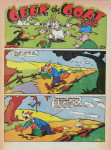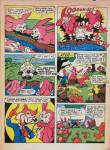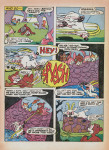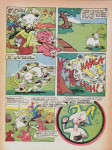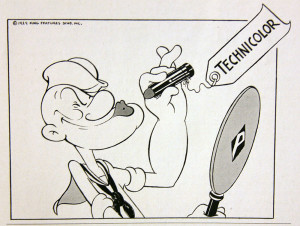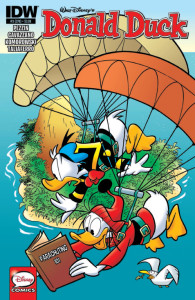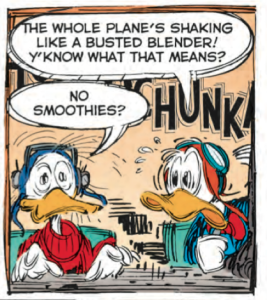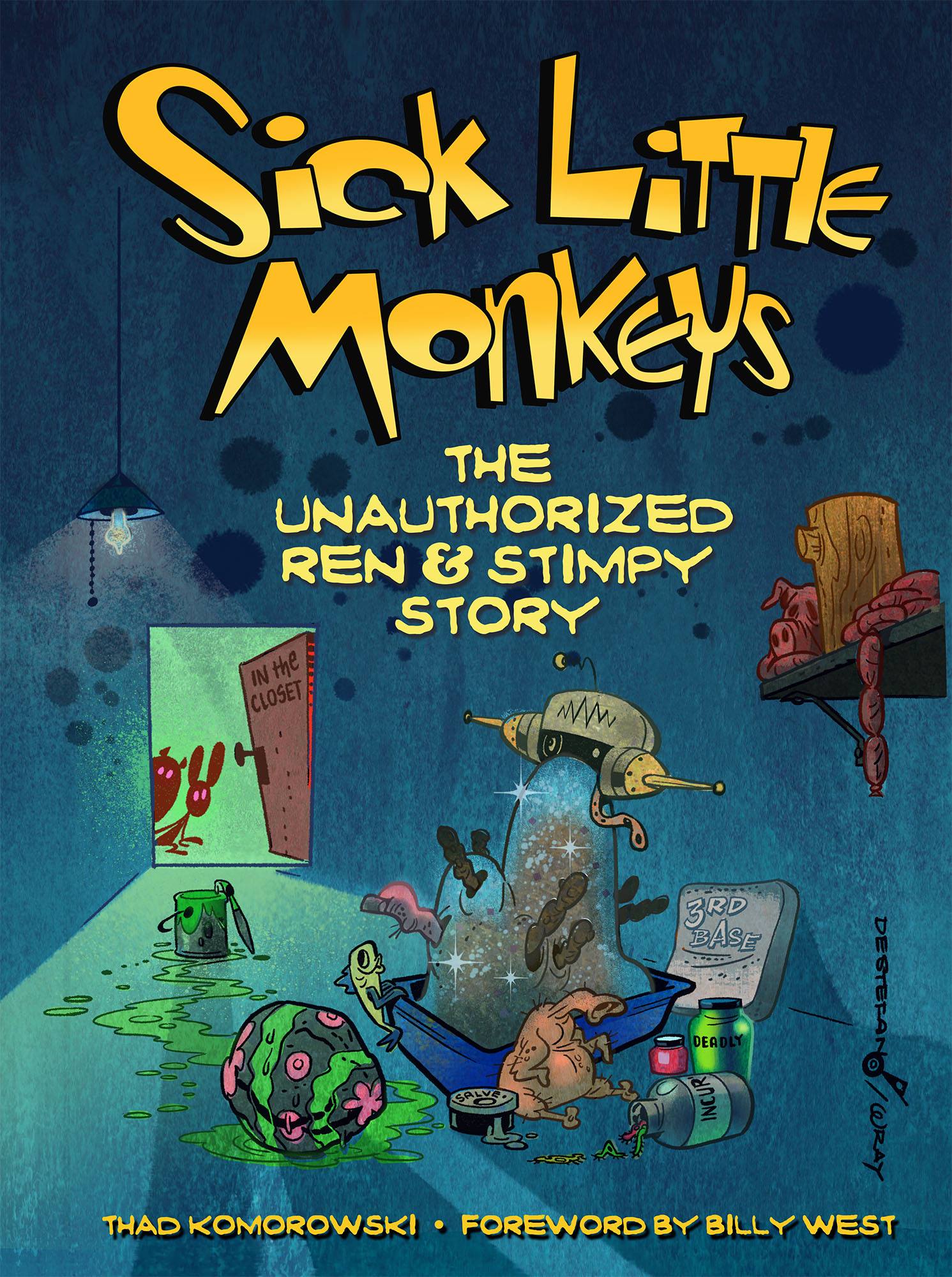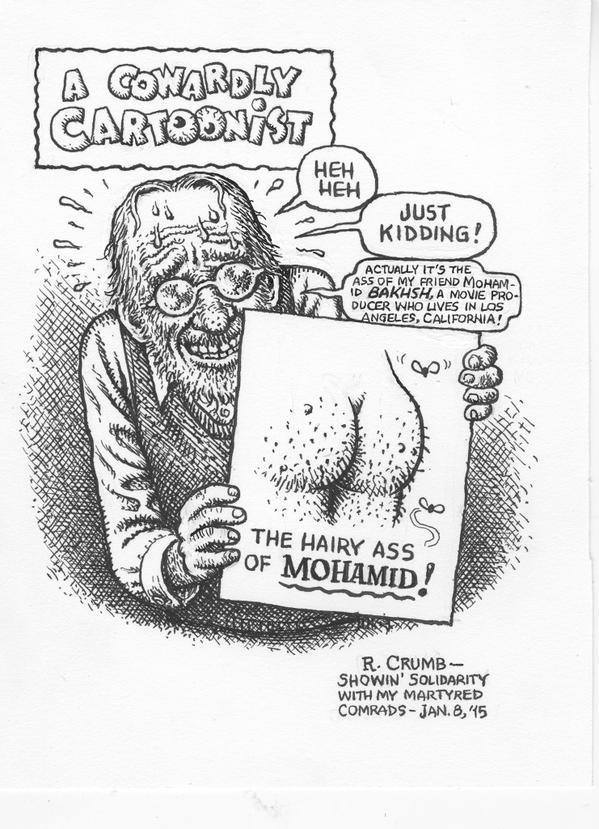
The cartoon that Robert Crumb did in response to the barbaric attack on Charlie Hebdo was a not-so-gentle reminder that not everyone views Ralph Bakshi as a deity. Recently, Bakshi completed The Last Days of Coney Island, the film he funded on Kickstarter in 2013. Its premiere is bizarre: for $3.99, you can rent the 25-minute film for a week on Vimeo. At the present, the Kickstarter backers that made the film possible have been unable to view the film without coughing up an extra four bucks. To paraphrase one of the Kickstarter comments, a true New York hustler to the very end.
To his credit, though, Bakshi’s company has promised a free online streaming of the film for backers shortly. But, even if Coney Island isn’t much, why kill its chances of qualifying for awards by premiering it this way? It’s certainly confusing and chaotic, and that’s an apt description given the filmmaker in question.
I wrote about Bakshi at considerable length in Sick Little Monkeys, and my opinions haven’t changed. I love his first two movies, Fritz the Cat and Heavy Traffic, and his Mighty Mouse TV show is about as unwatchable as a historically significant work can get.
Coonskin was the beginning of the end—despite the brilliant character animation and choreography, there isn’t a single engaging character in that film—regardless of the famous controversy surrounding its release. Bakshi himself has retold the tale of its disastrous screening at the Museum of Modern Art in November 1974 innumerable times, but here’s an account from a different perspective.
Izzy Klein isn’t a figure that garners much praise, but he witnessed and participated in a lot of animation history (and created Mighty Mouse while working for Terrytoons). He was a generous fount of knowledge to historians and through his articles in Cartoonist Profiles. (Although as my friend Howard Beckerman commented, “Ever notice how the ink never spills on him?”) He also exchanged regular letters throughout the ’70s with Jim Carmichael, a former layout artist for Disney, Screen Gems and Hanna-Barbera who went on to edit Peg-Board, the union newsletter. That correspondence is now housed in Klein’s collection at Syracuse University.
A lot of it wasn’t terribly important for research on my book about New York animation in the Golden Age, but the gossip relayed is downright entertaining, with refreshingly human takes on figures immune to criticism these days. Klein and Carmichael gave each other weekly updates about the antics of “Bakflip” in New York and Hollywood during his period of relevance.
One of those updates described the infamous MOMA Coonskin screening, which Klein and his wife attended. Historian and author Jerry Beck was also there and confirmed the account’s accuracy.
(Transcribed from Klein’s typewritten original, typos and all.)
November 19, 1974
Have you heard about Bakshi and the preview screening of “COONSKIN”? at the Museum of Modern Art on November 12th? A CONFRONTATION OF BLACKS AND RALPH BAKSHI: a real thriller! It was a newsworthy happening, but not a goddaam word about it in the papers. A self censored Press or no reporters were present.
To get back to the beginning… Ann and I were informed of the screening some time in advance and we obtained tickets. The auditorium was packed right up to the rear wall. I understand that there was a large overflow that could not get in. We sat down way in front to be near where Ralph would be disbursing from the “mike” Looking over the assemblage I could not spot a single familiar face from our animation business. When Ralph Bakshi came in he sat down on an aisle seat not too far from us. We waved to each other… “Hello Ralph”..”Hello Is.”
Before the show started Bakshi was introduced to the people by a young lady from the Museum. Ralphy stood, walked to the mike and said only a few words which only amounted to greetings and happy to see you here. Then the screening started. “Coonskin” is live and animated. The animation is very well done. Most of the characters are black… or should I say folks. All humanized..though no credit to the human race. The story is based on the Uncle Remus tales.. Br’er Rabbit, Br’er Fox and Br’er Bear.. all blacks.. They come up from the South and invade Harlam. They take over the rackets from other blacks and from the Mafia (whites). The characters are all vile, profane, … whores, pimps, perverts criminals of the lowest order. The atmosphere is of a nightmare. The language is salted with profanities, the favorite expression is “mother-fucker”. Everyone was caricatured in the most extreme and ugly fashion.
(Of course you must allow that neither Ann nor I are admirers of the sordid views of life as dished out by Ralph Bakshi).
As the screening ended and the lights were turned up, there was some scattered hand-clapping… not much… but lots of booing. Then from the rear of the auditorium a group of blacks, young and well dressed, men and women marched down to where Ralph had placed himself at the mike. They shouted their objections to the picture as the came down the aisle. They surrounded Bakshi, took the microphone and expressed additional objections and observations….like.. “We don’t live in ghettos, we live in apartment houses.. only Jews in Russia and Poland live in ghettos” Ralph answered.. “Only about 15 percent of blacks live in nice home, the rest live in slums..” I must give Ralph credit, he stood right up to them.. He shouted: “You’ve copped out the Black revolution.” A black girl shouted back: “Who the hell picked you out to be our Messiah.”
There was lots more said.. one black man shouted as he approached Ralph: “Have you ever been in a black church and heard a preacher say ‘mother-fucker? How dare you misrepresent us. A well-groomed black, wearing a cashmere camels hair coat was the first to take over the mike, expressed himself: “If I have anything to say, Paramount will never distribute this picture.” Ralph: “This is not a Paramount release.” Ralph was also charged with making these dirty pictures to make money on. He denied that he had made money on any of his pictures.
As I said, there was much more said, but overall the blacks looked very menacing as if they were going to pounce on Bakshi any minute and stomp him down. One black man had a billy club in his fist and kept slapping it on the palm of his hand. During the uproar there were two or three white fellows with small cameras taking close shots of the black demonstrators. The black man who threatened that the picture would never be distributed hollered: “Take that goddamn camera off my face.” I don’t know if the camera fellows were only camera-buffs, or from the Museum (very likely) or from the press.
The audience was mostly white. There were no Bakshi defenders coming forward, which I think was a good thing.. it only could have developed into a messy situation. Also, judging from the lack of applause I’m inclined to think the crowd agreed with the blacks.
Finally Ralph moved away from the microphone and sat down in one of the front seats. The shouting had subsided and the audience was leaving the theatre at a very fast pace. A small crowd of people crowded around Bakshi, some were the people who had been sitting there right along during the show. I thought I should say something to Bakshi before leaving, so I elbowed through, I said “Excuse me .. this is a social visit..” Ralph looked up, his face looked strained and pale, he saw me, said, “Not now Is, I’m still shaking all over.”
As Ann and I were walking east towards our bus on Madison Avenue we became aware of some people walking behind us. One of them was saying: “The police should have come down in a flying-wedge formation and taken care of those demonstrators. And I turned to that person, said, “That’s no solution.”
Would you believe it, animated cartoons used to be a fun thing.
End of brief report.
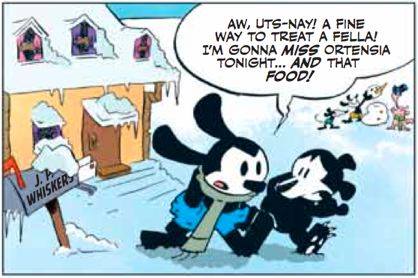


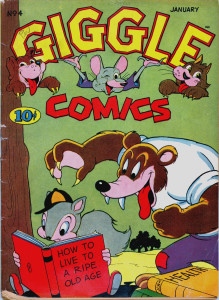 One of the great pleasures writing a history of the New York animation studios is finally doing some appreciative analysis of John Gentilella, or “Johnny Gent,” and his work. Admittedly, it will be brief. He was a relatively minor player—he worked at a higher skill level than any of his Famous Studios colleagues on increasingly mediocre cartoons—but he was an amazing repository of knowledge on the inner workings and personalities at Van Beuren, Terry’s, and Famous. It’ll be nice to have his memories give color to the larger story.
One of the great pleasures writing a history of the New York animation studios is finally doing some appreciative analysis of John Gentilella, or “Johnny Gent,” and his work. Admittedly, it will be brief. He was a relatively minor player—he worked at a higher skill level than any of his Famous Studios colleagues on increasingly mediocre cartoons—but he was an amazing repository of knowledge on the inner workings and personalities at Van Beuren, Terry’s, and Famous. It’ll be nice to have his memories give color to the larger story.